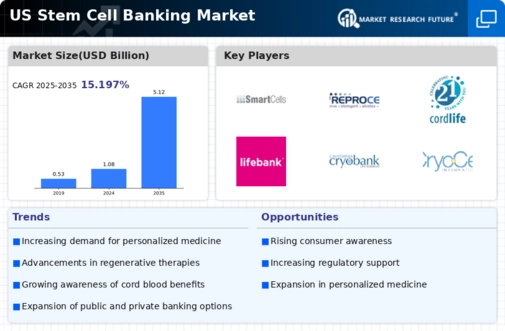The US Stem Cell Banking Market is characterized by a rapidly evolving landscape, driven by advancements in biotechnology and growing consumer awareness about the potential benefits of stem cell storage. With a surge in regenerative medicine and personalized health solutions, various players within the sector have intensified their efforts to secure a strong foothold. Competitive insights within this market highlight the strategies adopted by key companies spanning service offerings, technological innovations, and partnerships aimed at enhancing customer trust and expanding market reach.
A clear understanding of these dynamics is essential for stakeholders looking to navigate the complexities of the sector. Smart Cells has established itself as a competitive entity in the US Stem Cell Banking Market, leveraging its robust technical framework and commitment to excellence in customer service. The company capitalizes on its high standards of quality, rigorous processing protocols, and comprehensive educational resources to build consumer confidence.
Its strengths lie in advanced collection and preservation techniques that ensure optimal viability and functionality of stored stem cells, creating a significant differentiation factor in the market. Additionally, Smart Cells’ strategic marketing initiatives and customer-centric approach contribute to brand loyalty, positioning the company well within a competitive environment characterized by increasing options for consumers.
ReproCELL is another notable player in the US Stem Cell Banking Market, recognized for its innovative services catering to a wide range of stem cell-related applications. The company offers an array of products ranging from stem cell storage to research solutions, which appeal to both healthcare professionals and consumers. ReproCELL's strengths are reflected in its strong research and development activities, enabling it to stay at the forefront of scientific advancements.
Its partnerships and collaborations with various academic institutions enhance its credibility and market presence, allowing for ongoing innovation and improved service offerings. ReproCELL's strategic mergers and acquisitions have expanded its operational base and capabilities within the US, further solidifying its position in a competitive market while enabling it to provide high-quality services in the stem cell banking sector.






















